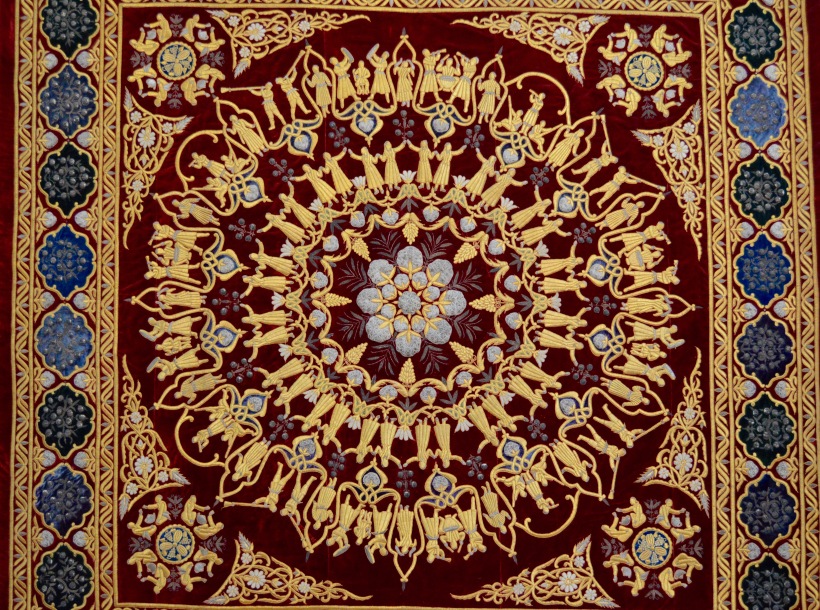In daylight, it was more apparent than at night that the area immediately surrounding the hotel comprised largely of parks in which substantial buildings dating from the Soviet and the post-Soviet eras provided accommodation for museums or officials engaged in an assortment of government roles. Every so often, Soviet-era apartment blocks and a few shops, cafes and restaurants emerged from among the trees. Most of the buildings were interesting only for their size or eccentric decorative detail. They were not great achievements in architectural terms, but I admired the brash monumentalism that inspired the best. When I walked past an armed guard in a sentry box in front of one government building, he warned me not to photograph the tall structure opposite. The structure opposite appeared to be the Ministry of the Interior.








At the hotel, we had what was the best breakfast of the trip. There were too many tempting items to try, although we had two mornings to do so. We were then taken on a coach trip around Tashkent, but there was time to see only the History Museum of the People of Uzbekistan (some of the most interesting exhibits related to the end of the tsarist era and the years when the communists imposed their authority in what was now Uzbekistan. A whole day could easily have been spent in the museum), the Museum of Applied Arts (beside occupying a delightful old house full of carved wood and brightly decorated ghanch, a material similar to alabaster, the museum had lots of high quality ceramic art and embroidered textiles), the Earthquake Memorial (this commemorated the 1966 earthquake that destroyed many parts of Tashkent) and Khast Imom, the official religious centre of the republic. Enormous Hazroti Imam Friday Mosque was part of Khast Imom. The mosque was flanked by two minarets 54 metres tall. Despite its traditional appearance, it was a modern structure dating from 2007. It was built on the order of President Karimov.





Perhaps the most interesting structure at Khast Imom was the Moyle Mubarek Library Museum (a medressa and a mausoleum were also worth examining) because, as well as containing some quite exceptional books dating from the 13th century, it was home to the 7th century Osman Qur’an, said to be the oldest complete Qur’an in existence. This enormous deerskin book was brought to Samarkand by Timur, then taken to Moscow by the Russians in 1868 and returned to Tashkent in 1924 as an act of goodwill to the region’s Muslims.




Following the 1966 earthquake, Soviet propagandists celebrated how thousands of the “fraternal people” of the Soviet Union, urban planners included, came from other parts of the communist empire to assist with reconstruction. However, when the government in Moscow announced that 20% of the new apartments would be given to the mainly Russian volunteers to live in permanently, fights broke out between Uzbeks and Russians in May 1969. The fights became known as the Pakhtakor Incident.


The trip concluded with a walk to the metro so we could travel one stop to admire the stations at the start and finish of our short journey. Both stations were gloriously eccentric but photography was prohibited. Why? Because the metro was deemed a facility of strategic importance that might be targeted by terrorists.

Once back at the hotel, I led three members of our group the short distance to a supermarket so they could purchase some items for home (I bought kefir for Hilary and me to consume almost immediately). I wanted a shop that sold wine and close to the supermarket was just what I required. Among the beers, wines and spirits presided over by someone of Russian origin were some Georgian wines. The Georgian wines were expensive by local standards due to their quality and the cost of importing them, but I was after something from Uzbekistan. For 19,000 som, I bought a Bagizagan Select Zulhumor semi-sweet red made entirely with Hindogny grapes. The wine had an alcohol content of 12%. When we consumed it before and after our evening meal, it had a deep ruby colour and rich but spicy red fruit flavours. The aftertaste was long and warm with hints of honey and cream. The Bagizagan winery was in the Samarkand Valley and had existed since 1964.
